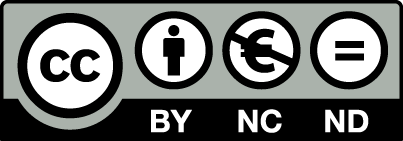Please use this identifier to cite or link to this item:
https://hdl.handle.net/2445/177893Full metadata record
| DC Field | Value | Language |
|---|---|---|
| dc.contributor.author | Montagud Marrahi, Enrique | - |
| dc.contributor.author | Arrizabalaga, Pilar | - |
| dc.contributor.author | Abellana Sangrà, Rosa Mari | - |
| dc.contributor.author | Poch, Esteban | - |
| dc.date.accessioned | 2021-06-01T12:38:47Z | - |
| dc.date.available | 2021-06-01T12:38:47Z | - |
| dc.date.issued | 2020-09-14 | - |
| dc.identifier.issn | 0211-6995 | - |
| dc.identifier.uri | https://hdl.handle.net/2445/177893 | - |
| dc.description.abstract | Introduction and objective: The optimal iron supplementation route of administration (intravenous vs. oral) in patients with chronic kidney disease (CKD) not on dialysis is a hot topic of debate. An oral preparation (liposomal iron, FeSu) has recently been developed with high bioavailability and low incidence of side effects. The objective was to evaluate the efficacy of FeSu in patients with stage 3 CKD and gastrointestinal intolerance to conventional oral iron therapy. Material and methods: Prospective observational study of patients with stable stage 3 CKD and gastrointestinal intolerance to conventional oral iron therapy. An oral 30 mg/day dose of FeSu was administered for 12 months. The primary outcome measure was hemoglobin increase at 6 and 12 months. Treatment adherence and adverse effects were also evaluated. Results: 37 patients aged 72.6 ± 14.7 years and with an estimated glomerular filtration rate (eGFR) of 42 ± 10 mL/min/1.73 m2 were included. 32 patients had received previous treatment with conventional oral formulations, 73% of which exhibited gastrointestinal intolerance with treatment adherence of 9.4%. After 6 months with FeSu, an increase in hemoglobin was observed versus baseline, which was sustained at 12 months (0.49 ± 0.19 and 0.36 ± 0.19 g/dL, respectively, p < 0.05), despite a significant eGFR decrease of 3.16 ± 1.16 and 4.20 ± 1.28 mL/min/1.73 m2 at 6 and 12 months, respectively. None of the patients experienced adverse reactions that required the treatment to be suspended. Adherence was 100% at both 6 and 12 months. Conclusions: FeSu is effective in a cohort of patients with stage 3 CKD with similar characteristics to the general population of moderate CKD patients, with a low rate of adverse reactions and excellent tolerability. | - |
| dc.format.extent | 7 p. | - |
| dc.format.mimetype | application/pdf | - |
| dc.language.iso | eng | - |
| dc.publisher | Elsevier España | - |
| dc.relation.isformatof | Reproducció del document publicat a: https://doi.org/10.1016/j.nefroe.2020.08.002 | - |
| dc.relation.ispartof | Nefrología, 2020, vol. 40, num. 4, p. 446-452 | - |
| dc.relation.uri | https://doi.org/10.1016/j.nefroe.2020.08.002 | - |
| dc.rights | cc-by-nc-nd (c) Sociedad Española de Nefrología, 2020 | - |
| dc.rights.uri | https://creativecommons.org/licenses/by-nc-nd/4.0/ | - |
| dc.source | Articles publicats en revistes (Fonaments Clínics) | - |
| dc.subject.classification | Malalties del ronyó | - |
| dc.subject.classification | Compostos de ferro | - |
| dc.subject.classification | Dèficit de ferro | - |
| dc.subject.other | Kidney diseases | - |
| dc.subject.other | Iron compounds | - |
| dc.subject.other | Iron deficiency diseases | - |
| dc.title | Liposomal iron in moderate chronic kidney disease | - |
| dc.type | info:eu-repo/semantics/article | - |
| dc.type | info:eu-repo/semantics/publishedVersion | - |
| dc.identifier.idgrec | 698118 | - |
| dc.date.updated | 2021-06-01T12:38:47Z | - |
| dc.rights.accessRights | info:eu-repo/semantics/openAccess | - |
| Appears in Collections: | Articles publicats en revistes (Fonaments Clínics) | |
Files in This Item:
| File | Description | Size | Format | |
|---|---|---|---|---|
| 698118.pdf | 331.92 kB | Adobe PDF | View/Open |
This item is licensed under a
Creative Commons License



